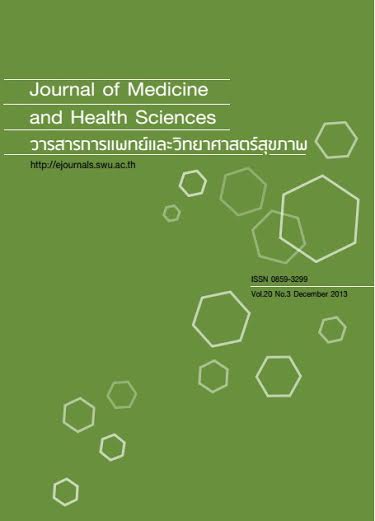Organic solvent exposure affecting exhaled nitric oxide among traffic policemen in Bangkok
Keywords:
Exhaled nitric oxide, Toluene, XyleneAbstract
The objective of this study was to find the exposure level of toluene and xylene that affect the level of exhaled nitric oxide among traffic policemen in Bangkok. The study group were 42 subjects from one police station working near a crowded traffic area in Bangkok. The data were collected by 3 instruments: 1) a passive personal air sampling by 3M organic vapor monitor 3500, 2) a questionnaire and 3) measuring the level of exhaled nitric oxide (NIOX MINO). Using statistical analyses of a Spearman Correlation and Chi-square to analyze the data, the results showed that the average age of the study group was 48.62 ± 7.40 years. The average working time was 16.40 ± 9.58 years. The average concentration levels for the toluene and xylene exposure were 213.63 ± 111.28 ppb and 309.81 ± 73.97 ppb, respectively. The average level of the exhaled nitric oxide was 26.29 ± 11.55 ppb. The results also showed that the toluene and the xylene exposures did not correlate with the levels of exhaled nitric oxide. However, the traffic policemen were exposed to organic solvent during their working hours, which may affect other diseases. So it is recommended that a supply of suitable of respiratory personal protective equipment be provided.Downloads
Published
2014-05-26
Issue
Section
Original Article


